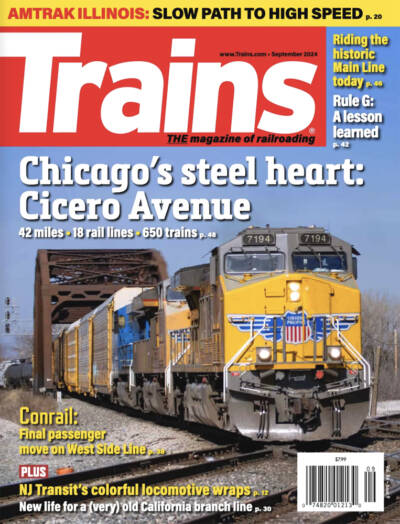Earlier this week, I commented on a Trains magazine article about Illinois spending $2 billion and 14 years to increase average passenger train speeds between Chicago and St. Louis by 5 miles per hour. This was done by increasing top speeds to 110 mph, but one of things I wrote was that “trains reach that speed only for a few short segments.”
Greg Richardson, the author of the Trains article, wrote to correct me on this point, saying that trains are able to travel at 110 mph for 148 miles or 52 percent of the 284 miles in that corridor. That’s less than the 92 percent that was promised but certainly more than “a few short segments.” I apologize for the exaggeration.
Richardson offered a few other comments. I had noted that positive train control had first been developed in the 1910s by Frank Sprague. He pointed out that “Sprague’s technology . . . does not meet the existing statutory and regulatory requirements.” But that was my point (and one that Richardson himself made in the article): increasing regulation by multiple agencies was a major factor in delaying the speed-up of Illinois trains from the promised 2015 to the actual 2023.
I also wrote that one of the specific technological reasons for the delay was “that the welds used to connect rails together left a magnetic residue that interfered with signals.” He responds that that particular problem was only associated with the demonstration phase of the project and did not delay the actual project. Still, it was an example of the kind of technological issues that confronted the state, though admittedly regulatory issues probably did more to delay the project.
Finally, I wrote that “If Union Pacific thought 110-mph trains would be profitable” it probably could have finished this project much faster than the state of Illinois took. “Union Pacific had no business interest in 110MPH operations nor realizes any significant benefit from same,” said Richardson. “In implementing 110MPH operations, UP was simply fulfilling the terms of its agreement with the state for the benefit of passenger train operations.” That’s completely true; my point was simply that the private sector tends to be faster than the government, a point with which Richardson agrees, saying that “I largely concur with your premise that government planning is inefficient and that the net schedule benefit of this project is underwhelming.”
I appreciate Richardson’s feedback on this subject. In the long run, positive train control can be an important part of all railroading, both freight and passenger, and his work has contributed to that. My objection is to the state of Illinois getting $2 billion from federal and state taxpayers by promising to increase train frequencies by 60 percent and reduce trip times by an hour by 2015 and to more than double ridership in the first year, and then almost completely failing to keep those promises.









Lawmakers seek to punish drivers for making sensible choices to protect themselves:
https://www.npr.org/2024/08/23/nx-s1-5084276/pedestrian-protection-bill-bigger-cars-trucks
Upgrading rail networks might make sense in rich countries like India, but poorer countries like the US have to watch every penny and save scarce resources to keep widening the overburdend highway system.
https://www.fastcompany.com/91178844/indias-rail-network-is-nearly-100-electrified-the-u-s-is-at-1